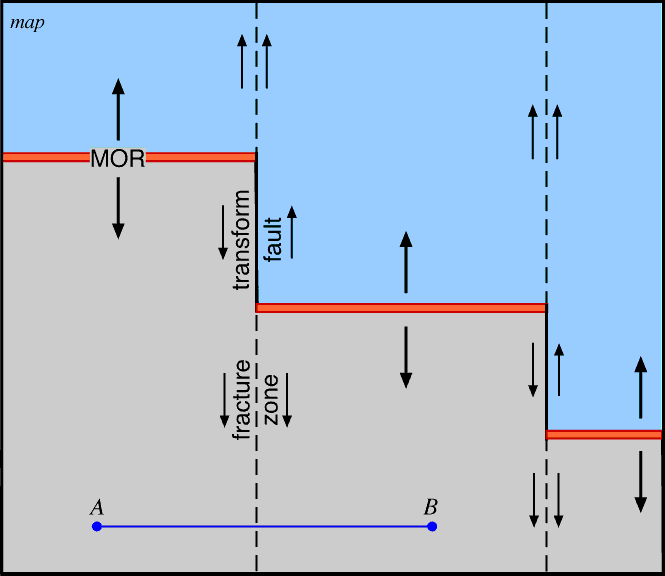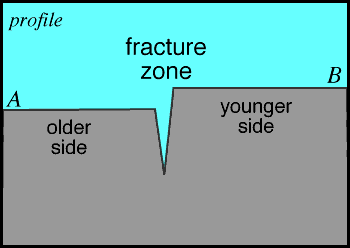
Midocean ridges are not continuous features. Midocean ridge spreading centers (MOR on the map below) are offset by numerous transform faults. MORs are, of course, divergent plate boundaries where two plates are spreading apart and new crust is forming by igneous intrusion and extrustion. The transform faults are not divergent boundaries. See the sense of relative motion across the transform faults on the map below. The fracture zones are not plate boundaries. The crust on both sides of a fracture zone are part of the same plate and moving in the same direction (see below).

Fracture zones exist as bathymetric features extending many hundreds of kilometers from the midocean ridge. Because of the offset of the midocean ridge spreading centers, the crust on one side of a fracture zone will be older and therefore colder, more contracted, and deeper than the crust on the other side. The boundary between them is often a deep canyon. These are places where deeper levels of the oceanic crust are exposed.
